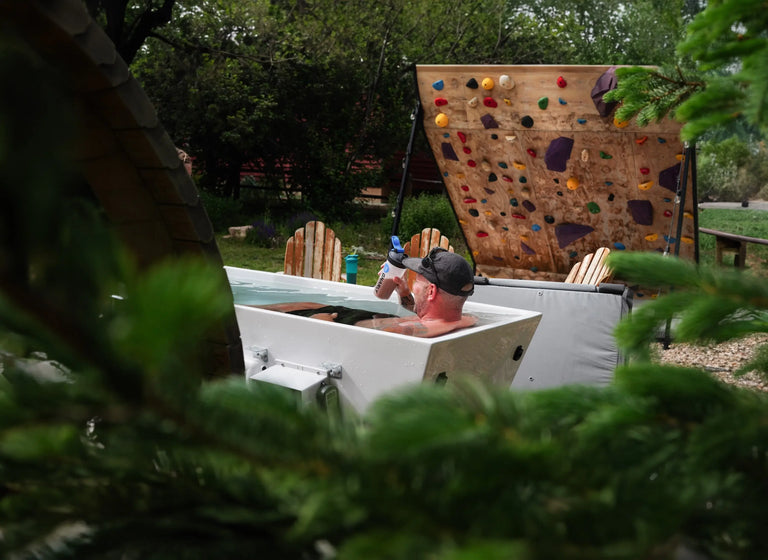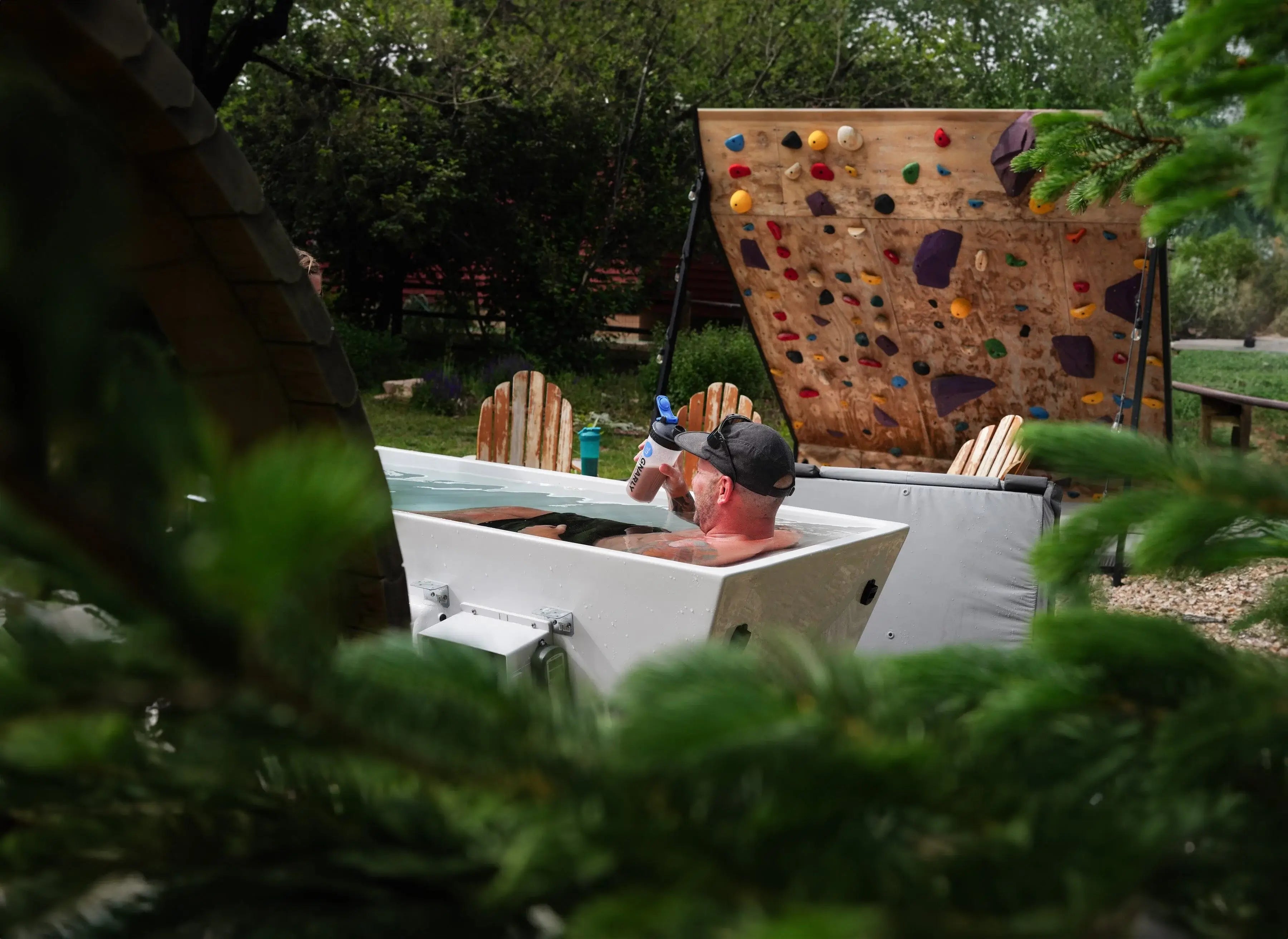Heat and cold exposure have emerged as innovative techniques for enhancing athletic performance and aiding in recovery. Recent podcasts from Dr. Rhonda Patrick, Dr. Andrew Huberman, and Ben Greenfield shed light on the potential benefits of heat and cold exposure. Let's delve into their findings to understand how these methods can influence performance and recovery.
Heat Exposure:
- Improved cardiovascular function: Heat exposure promotes increased blood flow, aiding in oxygen and nutrient delivery to muscles and tissues. It also stimulates the release of heat shock proteins, which protect against cell damage and aid in recovery.
- Enhanced endurance performance: Heat acclimation has been shown to improve endurance performance by increasing plasma volume, optimizing thermoregulation, and reducing core body temperature during exercise.
- Hormonal adaptations: Heat exposure can lead to increased release of growth hormone and insulin-like growth factor-1 (IGF-1), which may facilitate muscle growth and repair.
- Cognitive benefits: Heat exposure has been associated with improved cognitive function, including enhanced memory and focus.
Cold Exposure:
- Decreased inflammation and muscle damage: Cold exposure reduces blood flow, limiting the release of pro-inflammatory markers and promoting vasoconstriction, which can help mitigate exercise-induced inflammation and muscle damage.
- Enhanced recovery: Cold exposure accelerates recovery by reducing muscle soreness, aiding in glycogen repletion, and facilitating the removal of waste products like lactate.
Here are some recommendations for incorporating heat and cold exposure into your performance optimization strategy:
Heat Exposure:
- Engage in regular sauna sessions or hot baths (within safe temperature limits) to promote cardiovascular health, enhance endurance performance, and aid in recovery.
- Consider heat acclimation protocols, gradually increasing exposure duration and intensity, to optimize adaptations.
- Utilize heat exposure strategically before training sessions or competitions to enhance blood flow, warm up muscles, and improve cognitive function.
Cold Exposure:
- Incorporate cold-water immersion or cryotherapy post-exercise to reduce inflammation, facilitate recovery, and minimize muscle soreness.
- Experiment with contrast therapy, alternating between hot and cold exposures, to further enhance circulation and recovery.
Remember to consult with healthcare professionals or sports scientists before implementing new protocols, especially if you have pre-existing medical conditions or concerns.
Heat and cold exposure offer promising avenues for optimizing athletic performance and aiding in recovery. By incorporating these techniques into your training and recovery routines, you can tap into these benefits and potentially elevate your performance to new heights.
References:
Brunt, V. E., & Minson, C. T. (2021). Heat therapy: mechanistic underpinnings and applications to cardiovascular health. Journal of applied physiology (Bethesda, Md. : 1985), 130(6), 1684–1704.
Gerard A. Malanga, Ning Yan & Jill Stark (2015) Mechanisms and efficacy of heat and cold therapies for musculoskeletal injury, Postgraduate Medicine, 127:1, 57-65,
Gibson, O. R., Taylor, L., Watt, P. W., & Maxwell, N. S. (2017). Cross-Adaptation: Heat and Cold Adaptation to Improve Physiological and Cellular Responses to Hypoxia. Sports medicine (Auckland, N.Z.), 47(9), 1751–1768.
Huberman, Andrew. “The Science & Use of Cold Exposure for Health & Performance.” Huberman Lab, 3 Apr. 2023,
Kim, K., Monroe, J. C., Gavin, T. P., & Roseguini, B. T. (2020). Skeletal muscle adaptations to heat therapy. Journal of applied physiology (Bethesda, Md. : 1985), 128(6), 1635–1642.
Moore, E., Fuller, J. T., Buckley, J. D., Saunders, S., Halson, S. L., Broatch, J. R., & Bellenger, C. R. (2022). Impact of Cold-Water Immersion Compared with Passive Recovery Following a Single Bout of Strenuous Exercise on Athletic Performance in Physically Active Participants: A Systematic Review with Meta-analysis and Meta-regression. Sports medicine (Auckland, N.Z.), 52(7), 1667–1688.
Racinais, S., Alonso, J. M., Coutts, A. J., Flouris, A. D., Girard, O., González-Alonso, J., Hausswirth, C., Jay, O., Lee, J. K., Mitchell, N., Nassis, G. P., Nybo, L., Pluim, B. M., Roelands, B., Sawka, M. N., Wingo, J., & Périard, J. D. (2015). Consensus recommendations on training and competing in the heat. British journal of sports medicine, 49(18), 1164–1173.
Von Schulze, A. T., Deng, F., Morris, J. K., & Geiger, P. C. (2020). Heat therapy: possible benefits for cognitive function and the aging brain. Journal of applied physiology (Bethesda, Md. : 1985), 129(6), 1468–1476.


